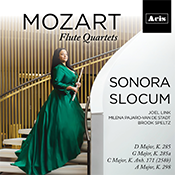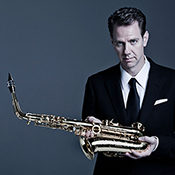
From Movie Magic to Riveting Jazz: The MSO Celebrates the 1930s in a three-concert festival.
Paul Kosidowski
PUBLISHED
Tagged Under: 1930s Festival, 2021.22 Season
May 1, 1931. Like the rest of America, Milwaukee is in the throes of an economic depression. Mayor Dan Hoan was scrambling to find help and work for the tens of thousands of Milwaukeeans who had lost their jobs. He got help after 1932 with the election of Franklin Delano Roosevelt, whose “New Deal” programs put people to work on public building projects and parks.
But the 1930s “were not a period of unrelieved strife, strike and struggle,” as John Gurda writes in his book, The Making of Milwaukee. “One of the paradoxical ‘benefits’ of the Depression was a dramatic increase in leisure time, and thousands of Milwaukeeans used it to their advantage.”
It was, after all, the Golden Age of Hollywood, and people flocked to new movie palaces that were opening up around the city. The grand opening of the Warner Theater on May 1st would bring crowds downtown to see films like Public Enemy with James Cagney, an early version of The Maltese Falcon (not starring Humphrey Bogart), and several movies featuring comedian Joe E. Brown, and the Warner Bros. Studio’s new action hero, Errol Flynn.
Ninety years later, after lying vacant for decades, that theater is again drawing crowds as the new home of the Milwaukee Symphony Orchestra. As part of the MSO’s first season performing for live audiences in its new home, Music Director Ken-David Masur wanted to pay tribute to the original theater and to the 1930s – its first decade.
“When we first thought about it,” Masur explains, “we wanted to honor the historic significance of the theater’s architecture and connect somehow with the time in which it was built. Almost 95 percent of what people see in the new space—hardware, lights—is intact from the original design.”
For Masur, the connections between today and the 1930s go beyond the physical structure of the building. “That original idea has been deepened by all the things we’ve been going through as a community and as a society,” he adds. “The hall opened during the Great Depression and at the end of Prohibition. There was segregation, socioeconomic issues. And politically, obviously, America was closely watching the rest of the world, particularly the political changes in Europe.”
By programming music from that time, Masur and the MSO wanted to use that moment as a way to reflect on our 2022 moment. “What kind of collective human experience did people bring to the theater in 1931? What kind of anxieties, what kind of concerns, what kind of joys? It’s interesting to connect those to our concerns almost a century later—COVID, Black Lives Matter, political polarization. The music of the 1930s makes us realize that we are connected to the human experience of that time, what people were going through back then.”
The festival starts with music that makes a direct connection to the early life of the Warner Theater. Errol Flynn made his debut in 1935’s swashbuckler Captain Blood, and the film also featured the first movie score by Erich Korngold, the Austrian composer who moved to Hollywood in 1934 as Hitler rose to power. “People would have come to this movie for a little bit of escapism,” says Masur, “but they would have heard quite a dramatic score.”
The connections to the 1930s are more serious-minded in the other works on the program. Benjamin Britten was a committed pacifist, and wrote his Violin Concerto after he left England at the start of World War II. Violinist Augustin Hadelich, the soloist for the festival’s opening concert, says the composer’s pacifist inclinations can be heard in the piece. Britten worked on the piece with Spanish violinist Antonio Brosa, and when Hadelich played the piece with the New World Symphony in 2018, he told an interviewer that Britten “was deeply affected and shaken by the Spanish Civil War, and this work can be seen as a kind of requiem for the dead of that horrific war.”
Other pieces on the opening program further reflect the mood in Europe at the time. Dmitri Shostakovich’s Age of Gold Suite (1930) is drawn from a ballet that recounts the visit of a Soviet soccer team to a Western city. The players are subject to an assortment of trials at the hands of unscrupulous capitalists. Paul Hindemith’s Mathis der Maler (1934) is based on the life of the 16th-century painter Mathias Grunewald. “It is quite spiritual,” Masur says, but it is also an allegory suggesting an artist’s duty to stand up to political oppression, as Hindemith did when the Nazis came to power in his native Germany.
The second and third concerts of the festival have a much more American flavor. The second features two short symphonic works by American composers, Howard Hanson and Roy Harris. And two pieces written by Europeans for that most American of instruments, the saxophone: Erwin Schulhoff’s jazzy “Hot-Sonate” and Jacques Ibert’s Concertino da Camera. Timothy McAllister is the alto saxophone soloist with Thomas Wilkins conducting the MSO.
The final concert of the festival explores the breadth of American music in the 1930s. “Samuel Barber was one of the great American composers who was celebrated by Europeans,” explains Masur. “They were often surprised: ‘Oh, he’s American? Why doesn’t he sound like Gershwin?’” Barber’s elegant Symphony No. 1 in One Movement will be a fitting contrast for the controlled cacophony of Charles Ives Three Places in New England, which features folk songs, marching band music, and hymns in an aural melting pot that is uniquely American.
The MSO’s Artistic Partner Aaron Diehl is the soloist in works that reflect the influence of African-American traditions on the music of the 1930s. William Grant Still was the first African-American composer to have a symphony performed by a major American orchestra (in 1931). Out of the Silence is a short piece that features Diehl on piano and Sonora Slocum on flute. Florence Price was the first African-American woman to have a work performed by a major American orchestra (in 1933), but she was mostly forgotten in the classical music world until an archive of her work was discovered in 2009. Diehl will play her 1934 Piano Concerto, which has been recently reconstructed from different versions and manuscripts, and has only re-entered the orchestra repertoire in 2020.
Diehl concludes the concert and the festival as soloist with the relatively unfamiliar Second Rhapsody of George Gershwin, originally titled “Rhapsody in Rivets.” Although it’s not performed as often as “Rhapsody in Blue,” Gershwin once called it, “the best thing I have ever written.”
“Every single one of these composers is close to my heart,” says Masur, “but this collection of music also represents a great summary of what we went through as a society in the 1930s.”


